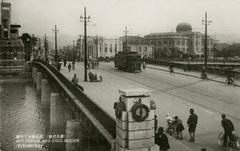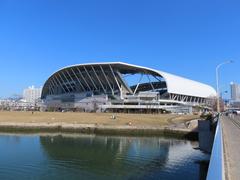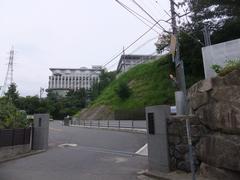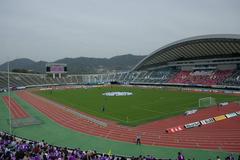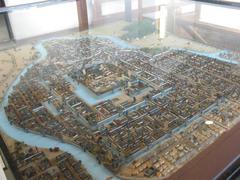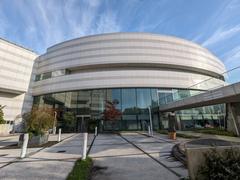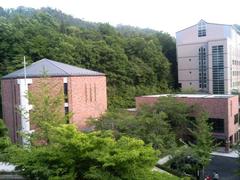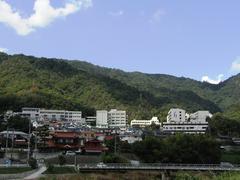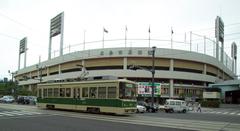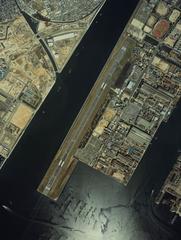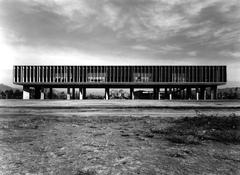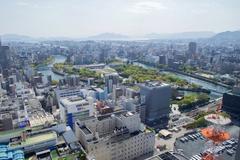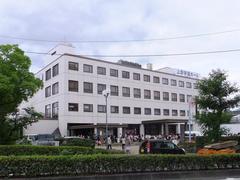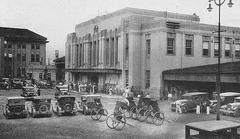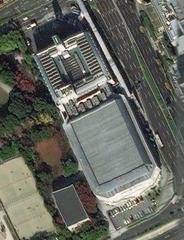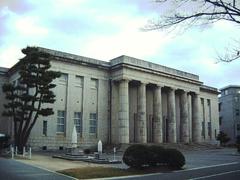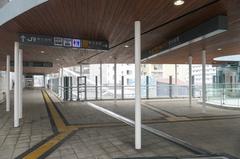
Hiroshima City University Visiting Guide: Hours, Tickets, and Nearby Historical Sites
Date: 14/06/2025
Introduction
Hiroshima City University offers visitors a unique opportunity to explore a city deeply marked by history yet renowned for its resilience and dedication to peace. Central to Hiroshima’s identity is the Hiroshima Peace Memorial, or Atomic Bomb Dome, a UNESCO World Heritage Site standing as a symbol of the city’s tragic past and inspiring recovery. This guide provides essential information for visiting Hiroshima City University and surrounding historical landmarks, focusing on the Peace Memorial, nearby attractions, practical travel tips, and answers to frequently asked questions.
Consult official resources such as the Hiroshima Peace Memorial Museum and the Official Hiroshima Tourism Board for the latest updates. Consider downloading the Audiala app for guided audio tours and event notifications to enhance your visit.
Contents
- Introduction
- Historical Background: The Atomic Bombing and Aftermath
- Cultural Significance of the Hiroshima Peace Memorial
- Visiting Hours and Ticket Information
- Guided Tours and Special Events
- Accessibility and Photographer’s Tips
- Nearby Attractions
- Frequently Asked Questions (FAQ)
- Conclusion and Next Steps
Historical Background: The Atomic Bombing and Aftermath
On August 6, 1945, Hiroshima became the first city in history to experience an atomic bombing. The devastation was immediate and widespread, with tens of thousands of lives lost and much of the city destroyed. The Atomic Bomb Dome, formerly the Hiroshima Prefectural Industrial Promotion Hall designed by Czech architect Jan Letzel, was one of the few structures left partially standing near the bomb’s epicenter. Preserved in its ruined state, it now serves as a powerful symbol of the impact of nuclear warfare and the global call for peace.
The Cultural Significance of the Hiroshima Peace Memorial
The Hiroshima Peace Memorial is more than a preserved ruin; it is a place of reflection, remembrance, and education. Each year, the Peace Memorial Ceremony on August 6 draws global attention, reinforcing Hiroshima’s role as a city dedicated to nuclear disarmament and peace. The adjacent Hiroshima Peace Memorial Museum provides detailed exhibits on the bombing’s impact and the ongoing peace movement, making a visit both an educational and deeply moving experience.
Visiting Hours and Ticket Information
Hiroshima Peace Memorial Park & Atomic Bomb Dome
- Park and Dome Access: Open year-round, 24 hours a day. Entry is free.
- Best Time to Visit: Early mornings and weekday afternoons offer a quieter, more contemplative atmosphere.
Hiroshima Peace Memorial Museum
- March to November: 8:30 AM – 6:00 PM
- December to February: 8:30 AM – 5:00 PM
- Last Admission: 30 minutes before closing
- Closed: December 30 and 31
Admission Fees
- Adults: ¥200
- High School & University Students: ¥100
- Junior High School & Younger: Free
Tickets can be purchased at the museum entrance. Discounts are available for groups, and guided tours can be arranged in advance.
(Hiroshima Peace Memorial Museum)
Guided Tours and Special Events
- Official Guided Tours: Offered in multiple languages by the Hiroshima Peace Culture Foundation. Advance booking recommended, especially during peak seasons.
- Audio Guides: Available for rent at the museum.
- Special Events: The annual Peace Memorial Ceremony (August 6), lantern floating on the Motoyasu River, and educational workshops.
Accessibility and Photographer’s Tips
Accessibility
- Wheelchair Access: The park and museum are fully accessible, with ramps and elevators.
- Facilities: Accessible restrooms are available throughout the park and museum.
Photography
- Best Times: Early morning and late afternoon provide optimal lighting for photographing the Dome and park.
- Restrictions: Photography is allowed outdoors. Some museum exhibits may restrict photography—please follow posted guidelines.
Nearby Attractions
- Hiroshima Castle: Explore the city’s feudal history; a short walk or tram ride from Peace Memorial Park.
- Shukkeien Garden: A traditional Japanese garden offering tranquility just a few minutes away.
- Children’s Peace Monument: Dedicated to child victims of the bombing, located within Peace Memorial Park.
- Okonomimura: A lively food complex famous for Hiroshima-style okonomiyaki pancakes.
Frequently Asked Questions (FAQ)
Q: Is there an entry fee for the Atomic Bomb Dome?
A: No, viewing the Dome and walking through Peace Memorial Park are free.
Q: Are guided tours available in English?
A: Yes, official tours and audio guides are available in English and other languages.
Q: Can I take photos inside the Peace Memorial Museum?
A: Photography is restricted in some museum areas; please adhere to posted signs.
Q: What is the best way to get to the Peace Memorial Park from Hiroshima Station?
A: Take the Hiroden Streetcar (lines 1, 2, or 6) to Genbaku Dome-mae stop, or walk approximately 20 minutes.
Q: Is the site suitable for children?
A: Yes, but due to the solemn nature, parental guidance is advised.
Practical Travel Tips
- Wear comfortable shoes—the park covers a large area.
- Bring water and sun protection, especially during summer.
- Respect the quiet, reflective atmosphere.
- Visit during spring or autumn for mild weather and beautiful scenery.
Conclusion and Next Steps
Visiting Hiroshima City University and its surrounding historical sites, especially the Hiroshima Peace Memorial and Atomic Bomb Dome, offers a profound opportunity to reflect on world history and the enduring aspiration for peace. With free access to the memorial and affordable museum tickets, the experience is accessible to all visitors. Make the most of your trip by consulting official resources, booking guided tours, and planning visits during quieter hours.
For the latest information on visiting hours and events, consult the Hiroshima Peace Memorial Museum and the Official Hiroshima Tourism Board. Download the Audiala app for guided tours and real-time updates, and follow us on social media for more tips and inspiration.
Official Sources and Further Reading
- Hiroshima Peace Memorial Museum
- Official Hiroshima Tourism Board
- UNESCO World Heritage: Atomic Bomb Dome
- Visit Hiroshima - Tourism Information

